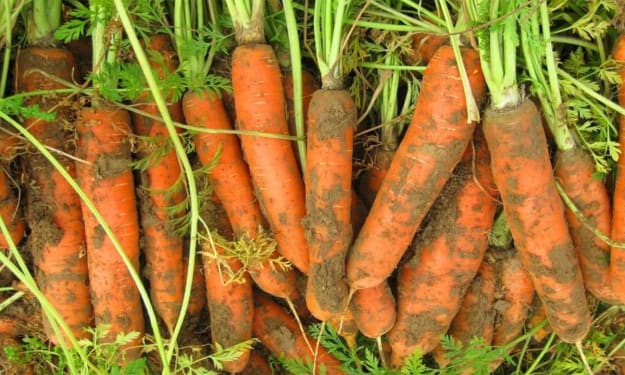Banana Peppers Turning Purple: Diagnosis and Treatment
why are my banana peppers turning purple?

I. Introduction
Banana peppers turning purple are a head-scratcher. Fear not, we will unravel the multilayered reasons behind peppers turning purple.
II. Why Are My Banana Peppers Turning Purple?
1. Lack of Nutrients
A common reason for banana peppers turning purple is a deficit in key nutrients. Magnesium and phosphorus are particularly at play here. Lack of magnesium can lead to a condition called chlorosis, a yellowing of the plant. A similar story unfolds with phosphorus deficiencies.
2. Environmental Stress
Sudden temperature changes, excessive rainfall, or drought conditions can stress the plant. These result in purple peppers. Ensuring a consistent growing temperature around 60 to 75 degrees Fahrenheit.
Water your plants deeply but infrequently can prevent these issues. Similarly, an inadequate amount of sunlight or high sun exposure can cause banana peppers to develop a purple color.
3. Pests and Diseases
An infestation of pests like aphids or certain fungal infections can stress the plant. They can lead to pepper discoloration. Symptoms may include more than just a change in color. You may also notice spots, wilting, or a decrease in fruit production.
III. Nutrient Deficiencies
1. Nitrogen Deficiency
Banana pepper plants deprived of nitrogen may turn purple. Nitrogen is key to healthy leaf growth and that classic green hue. When plants lack nitrogen, they might demonstrate stunted growth, purple coloring, or a general loss of vigor.
To address this, consider organic soil additives like compost or fish meal. Water-soluble fertilizers containing nitrogen can also be a quick fix.
2. Phosphorus Deficiency
Phosphorus is fundamental for plant energy. It plays a significant role in flower and fruit development. A lack of phosphorus can lead to delayed maturity and smaller, fewer, or oddly shaped fruits.
To combat this, consider applying bone meal or rock phosphate to your soil. Be mindful of the application as too much phosphorus can lead to imbalances and other issues.
3. Potassium Deficiency
Potassium is essential for robust plant growth. Symptoms of potassium deficiency include weak stems, smaller fruit, and banana peppers turning purple.
To bolster potassium levels, slow-release potassium sulfate or granite dust might be beneficial. Remember, excessive potassium may interfere with magnesium uptake. So a balanced approach is vital.
4. Soil Testing and Amendment
You can often obtain soil test kits from your local cooperative extension service. Once the results are in, you may need to amend the soil with compost or specific nutrients.
IV. Environmental Factors
1. Temperature Stress
Pepper plants are notoriously finicky about temperature. Highs that soar above 90°F (32°C) or lows that dip below 60°F (15°C) can induce physiological stress responses. The chlorophyll gives the peppers their green color. It requires a relatively stable temperature regime.
Hot weather robbing the soil of moisture. The lack of chlorophyll production can cause a color change to purple. You can manage such fluctuations with shade structures or the strategic mulching of soil. This retains moisture and cool roots.
2. Sunlight Exposure
An undersupply of sunlight can also prompt purple peppers. Sunshine is a critical catalyst in the photosynthesis process. Peppers rely on it to produce energy in the form of sugars. When without enough sunlight, peppers may synthesize less chlorophyll. This leads once again to the manifestation of purple coloration.
If your plants aren't receiving enough sunlight, consider trimming nearby foliage that may be casting shade. You can also transplant them to a sunnier spot. Adding shade cloth or other materials during the peak sun hours.
3. Watering Issues
Under- or over-watering can spell double trouble for peppers. Inconsistent watering routines confuse the plants, leading to alternating periods of stress and relief.
During drought-like conditions, plants prioritize water use. The production of chlorophyll may temporarily be put on hold. Over-watering, conversely, can suffocate roots and impede the uptake of nutrients. This can also lead to a purple hue in the peppers.
To establish a proper watering regimen, you should set a schedule. Avoids allow the soil to become bone dry or waterlogged.
V. Pest and Disease Management
1. Aphids and Other Pests
Aphids are tiny insects that can infest pepper plants. They are often found on the underside of leaves sucking sap from the plant. Other common pests include pepper maggots and caterpillars. These can also damage the plants.
To control these, you can introduce or encourage natural predators. For example, ladybugs and lacewings. Use insecticidal soaps or neem oil to kill the aphids. Ensure you're thorough in covering the plant's surfaces. Set up physical barriers or traps to manage larger pests. For example, the pepper maggot.
2. Fungal Diseases
Fungal infections such as anthracnose, powdery mildew, and various leaf spots can all lead to purple discoloration on banana pepper plants. To manage these, provide adequate airflow and spacing between plants. This can prevent the spread of spores.
Apply copper-based fungicides preventatively. Especially during wet periods or after rainfall when the risk of infection is higher. Remove and dispose of infected plant material. This prevents the spread of the disease.
3. Bacterial Infections
Bacterial diseases like bacterial spots or wilts can also cause peppers to turn purple. You should practice crop rotation. Avoid planting peppers in areas where the disease has been prevalent in the past.
Ensure you're watering your plants at the base. This prevents splashing waterborne bacteria onto leaves. Monitor for signs of disease. Act quickly to quarantine and manage affected plants to prevent further spread.
VI. Conclusion
Why do banana peppers turn purple? Pepper plants are incredibly responsive to their growing conditions. The color adaptability of banana peppers offers a beautiful testament to this fact. Whether it's a genetic cue or an environmental reaction, peppers turning purple is a reminder to remain attuned to the needs of your garden.
About the Creator
Vincent Lee
We are a professional plastic gallon pots, plastic injection gallon pots, plastic nursery pots and carry trays, plastic seedling trays, plastic decorative pots, fabric grow bags, square plastic plant pots manufacturer and supplier in China.






Comments
Vincent Lee is not accepting comments at the moment
Want to show your support? Send them a one-off tip.